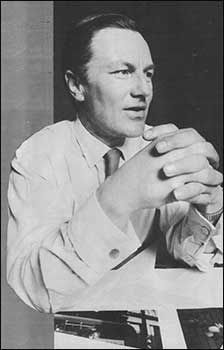MUCH VAUNTED, hands-on management looks good on paper, but what precisely does it demand of the manager, and how does it work in practice?
First, hands-on managers are probably best at managing what they know best. This isn't just a matter of knowing their way around the books, in a sense it is better if the industry is in their blood.
The leather industry has many ways into a manager's being, the most obvious is the nose. But for Richard Strong, the route was hereditary. He is the fourth generation of Strongs in the leather business, and after 27 years at the game can claim to know it and the other players inside out.
The game analogy is apposite, since it encapsulates the competitive drive hands-on managers must have if they and their companies are to survive and win. And clearly, Richard Strong is playing to win.
 |
|
Richard Strong
|
|
At the moment, New Zealand's abattoirs are strikebound, with the unions blacking any movement of lambs’ skins (among other things), thereby threatening to cut off a key source of raw materials for Strong and his competitors worldwide.
But through his close contacts in New Zealand, Strong got wind of the strike and shipped his skins to private warehouses just before the unions struck. This leaves him well placed to cover his needs and demand a high price in a short market.
Playing to their strengths, or their opponents' weaknesses, is a key strategy in the hands-on managers' game plan, and one which Richard Strong uses to full advantage.
Strong's primary raw material, lambs skins, is traded like any other commodity, yet there is no formal, central market on which to hedge and nor would Strong like to see one.
Apart from the difficulties of devising a market sufficiently able to price an infinitely variable (in quality and source of supply) commodity, Strong believes his knowledge of the overall market gives him a competitive edge over his rivals.
There is no room for self-doubt in any hands-on manager's make-up, though surrounding oneself with known and trusted colleagues is helpful.
Richard Strong met John Harrison, currently manager of Strong & Fisher's tannery division, at the leather college in London during the late fifties. The meeting had a lasting impact; thanks to a penalty offence by Harrison on the rugby field, Strong lost his cartilages. Trust, it seems, is forged in strange ways.
Team work is crucial, but so is leadership and direction, although these are probably best tempered by a willingness to admit having made a mistake, ride with the punches and do better next time.
An undoubtedly forceful character, Strong was quick to point out he made a mistake as a manager by not responding quickly enough to market forces during his industry's lean years in the early eighties. Subsequently, however, he predicated his whole policy upon a swift response to consumer demand.
Straightforward dedication to the task is undoubtedly the primary requirement hands-on management must meet. Almost predictably, Richard Strong's friends say his three loves are his job, his horses and his family - in that order. Strong disputes the ranking: "I dedicate equal time to each," but admits "my job is my life".
There is no need for this to be an onerous burden, however, provided the hands-on manager is doing what he or she wants. Strong bears witness to his pleasure through the statuette of a sheep on the bonnet of his Jag.
Car and sheep are generally a blue and silver blur as Strong bombs around the countryside, dealing with speed traps with laudable dexterity. The hands-on manager is clearly going places.